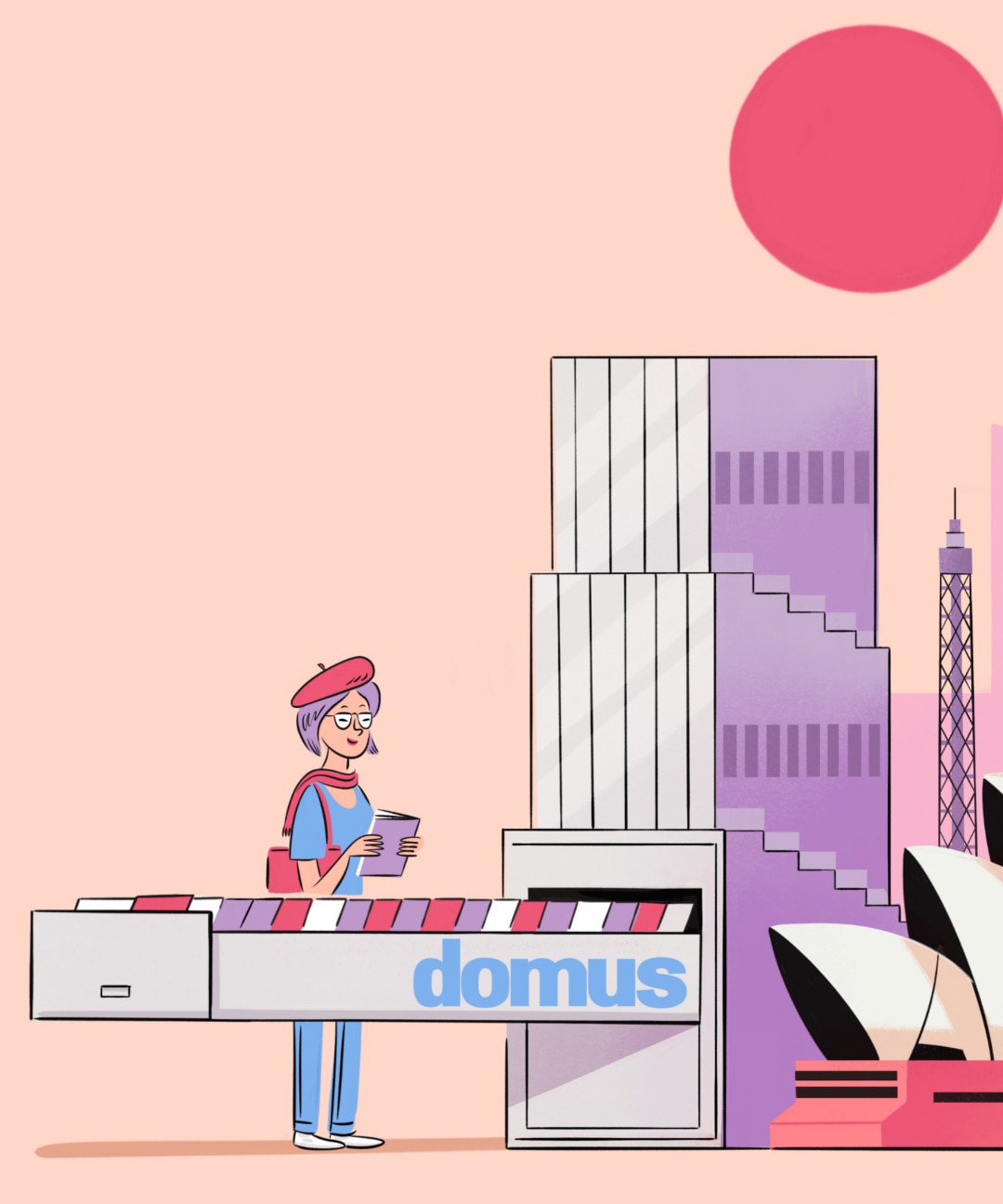Yekaterinburg seems to be a very active city with its population of 1,200,000 moving through streets planned according to 1930's Stalinist zoning. The main boulevard with the tram line in the center is lined with government buildings and blocked by traffic as an increasing number of cars begin to circulate. The best buildings from the Constructivist era, when Yekaterinburg was one of its "cradles," are covered with billboards and not at all well-maintained. On the other hand, new residential towers are springing up everywhere, rapidly replacing the old gray barracks with new and colorful glass facades.

The first visual impact is cinematographic: symmetrical, colorful, imposing. One understands that this is just a part of what is being planned and they explain to me that it is already home to about 30,000 people. The density is striking and the buildings, in response to Soviet drabness and its repetitive and disorienting volumetric expressions are colored according to zone. We immediately notice that something must have gone wrong with the blue, because the color is too vibrant—almost fluorescent to the limits of visual discomfort.

It was explained to me that this is an entirely private enterprise with no social housing, and that the residents come from areas outside the city, and that 30% has been optioned by the army to provide homes to veterans, and also that many residents from Yekaterinburg are moving to Akademia City, given the comfort and security of the new town.
When seeing a city for 325,000 inhabitants rise out of nowhere, the first thing one wonders about is where all the people will come from.

It is as though a child had been given a black-and-white coloring book to color with pastels. The repetitive facades have multiple and varied color compositions which give some joy to the overall composition.

For someone like me, with origins in Italian culture where cities are layered over centuries and decades, it is truly difficult to imagine a unitary operation for the construction of a city for 325,000 people and I think that it can be done only with the centralized and dirigiste know-how of countries having a socialist past.
Before leaving, they explain that crime in Akademia City is 70% lower than in Yeketraninburg. This service costs residents the modest sum of 300 rubles a month, about 10 euros. The gated community model has been extended to an entire city here, and I am dubious as to whether we are being monitored inside our space or if we are being controlled when we are outside.

Towards the end of the debate, Boris is invited to present the idea of the consultation. He illustrates a model of sustainability that is not just economic or technological but also social and civic; and he proposes the involvement of a selection of young architects from around the world to help guide future design choices and eventually perform some "surgery" on what is now being constructed. We support him and recognize the fact that the architecture, even in this case, is both the problem and the solution at the same time. Akademia City is a large contemporary urban experiment and it is well worth the effort to experiment innovative design processes and not repeat experiences that have been shown to have major flaws, especially in the large areas of prefabricated Russian neighborhoods.
Having the opportunity to modify choices in progress with a team of young architects from around the world is an extremely interesting challenge and in some ways it is unique, moving beyond the search for a brand that can "cleanse" unscrupulous real estate transactions to look at new ways of implementing urban design. Will it be possible? Let's see what happens.

On the way to the airport, while the news comes through that United Russia is definitely under 50% of the vote and that fraud is being reported everywhere, it is almost comforting to see a reproduction of a residential village in Austria, despite its alienation: familiar kitsch that feels safer and more secure than the Akademia city experiment, whose colors remain pleasantly imprinted in my mind, along with many questions. From the air, I track the artificial canals created for the transportation of raw materials and gas lines directing me towards Europe.
Michele Brunello

A Brutalist masterpiece frames the novelty signed 24Bottles
Giancarlo De Carlo's Collegi in Urbino is hosting a campaign for a signature product of 24Bottles: the brand's first titanium bottle, designed under the banner of essentiality.




